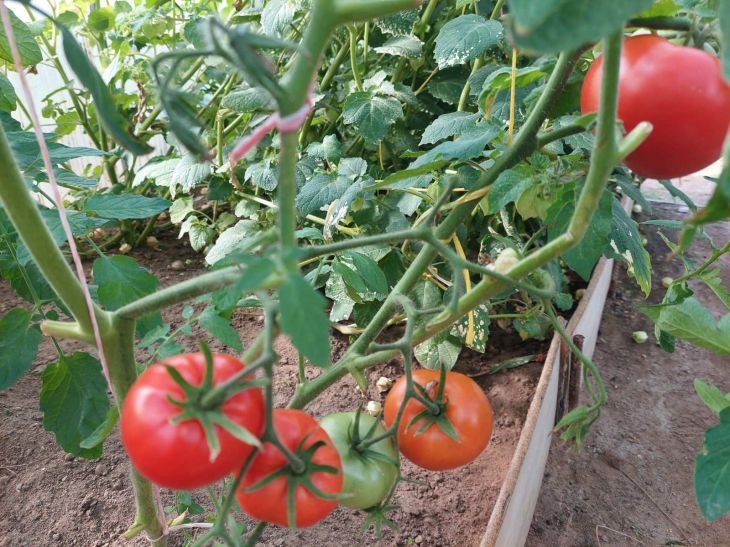Kefir is a natural and healthy remedy for improving the growth and health of tomatoes.
This dairy product is rich in microelements and probiotics, which help strengthen the immunity of plants and their resistance to diseases.
How to use kefir for watering tomatoes?
Preparation of kefir solution
To water tomatoes with kefir, you need to prepare a special solution.
Using pure kefir can lead to soil acidification, so it is diluted with water. The optimal concentration of the solution is one glass of kefir per bucket of water (10 liters).

It is important to use fresh kefir without additives and preservatives. The finished solution should be homogeneous, without lumps and sediment.
Before using the solution, it is recommended to let it sit for several hours for better distribution of nutrients.
Proper watering of tomatoes
Watering tomatoes with kefir should be done in the morning or evening hours to avoid rapid evaporation of moisture and better absorption of nutrients.
It is necessary to water the plants at the roots, avoiding the solution getting on the leaves and stems. This will help prevent the development of fungal diseases.
The frequency of watering depends on the soil condition and weather conditions. Usually it is enough to water the plants with kefir once every two weeks, but it is important to monitor their condition and change the watering schedule if necessary.
Improving soil structure
Kefir not only nourishes plants, but also improves the soil structure. Microorganisms contained in kefir promote the decomposition of organic matter and increase soil fertility.
The soil becomes looser and more breathable, which promotes the development of the root system.
Using kefir helps maintain an optimal level of soil acidity, which is especially important for tomatoes, which prefer a neutral or slightly acidic environment.
Disease prevention
Kefir has a positive effect on the immune system of tomatoes, making them more resistant to diseases and pests.
Lactobacilli contained in kefir suppress the development of pathogenic microorganisms and fungi, preventing diseases such as late blight and powdery mildew.
Regular watering with kefir helps to create favorable conditions for healthy plant growth and a rich harvest.
Impact on yield
Using kefir to water tomatoes has a positive effect on their yield.
The nutrients contained in kefir promote accelerated growth and development of fruits, making them larger and juicier.
Improving the soil structure and increasing its fertility also contributes to an increase in the number of fruits per bush.
By using kefir you can get not only healthy, but also tasty tomatoes.
Compatibility with other fertilizers
Kefir can be used in combination with other organic and mineral fertilizers.
Combining different feeding methods allows you to provide plants with all the necessary nutrients and microelements.
It is important to monitor the dosage of fertilizers so as not to overfeed the plants. Excessive amounts of fertilizers can lead to root burns and deterioration of the plants.
The correct combination of kefir and other fertilizers helps to obtain a stable and high yield.
Recommendations for use
Watering tomatoes with kefir is a simple and effective way to improve their growth and yield.
It is important to follow the recommendations for preparing the solution and the watering schedule to avoid negative consequences.
Using kefir helps not only to strengthen the immunity of plants, but also to improve the structure of the soil and increase its fertility.
Regular watering with kefir allows you to get healthy and tasty tomatoes that delight with their appearance and taste.
Previously, 3 ideal June fertilizers for tomatoes were named.








